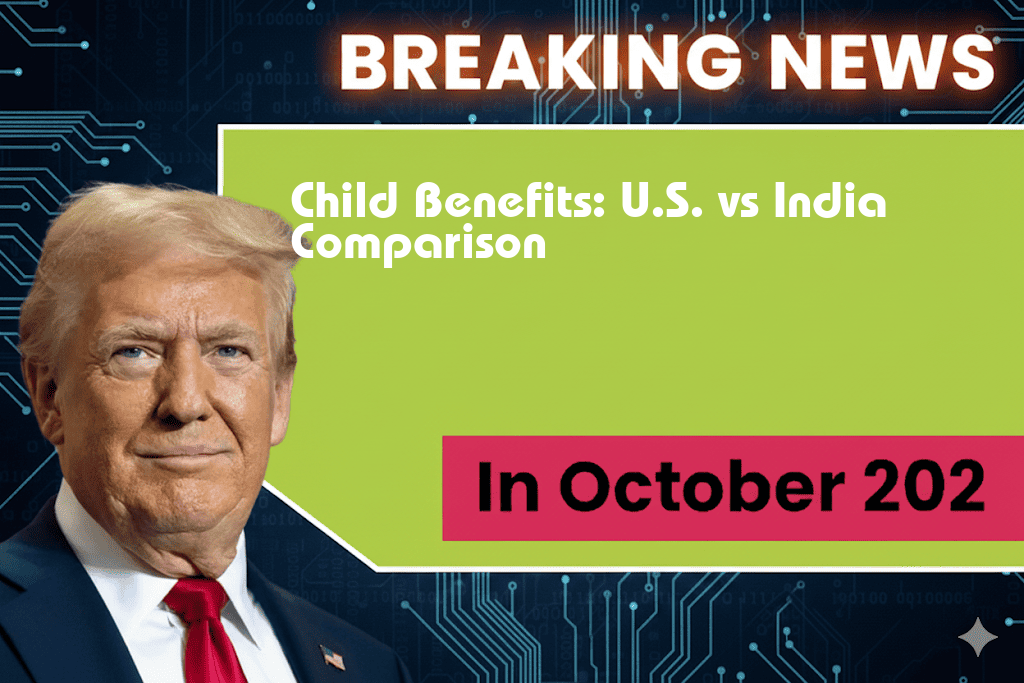As governments around the world seek to support families and alleviate economic pressures, child benefit programs have become a focal point of policy discussion. In the United States, parents can receive up to $2,200 in child tax credits, while in India, the government offers a substantial sum of ₹1,65,000 (approximately $2,000) under its various welfare schemes. This article examines the differences and implications of these benefits, exploring how each country addresses child welfare, the economic context surrounding these payments, and the overall impact on families.
Understanding Child Benefits in the U.S.
The U.S. child tax credit program is designed to provide financial assistance to families with children under the age of 17. This credit was significantly enhanced under the American Rescue Plan, leading to a one-time increase for eligible families. As of 2023, the credit amount can reach up to $2,200 per child, depending on income levels and filing status.
Key Features of the U.S. Child Tax Credit
- Eligibility: Families with an adjusted gross income below certain thresholds qualify for the full credit.
- Refundable: The credit is partially refundable, meaning families can receive a refund even if they owe no taxes.
- Direct Payments: Many families receive these credits as direct payments, providing immediate financial relief.
Child Benefits in India: A Closer Look
In India, child welfare programs encompass a range of initiatives, including direct financial support, nutrition programs, and educational assistance. The total benefits can amount to around ₹1,65,000 (approximately $2,000) annually, depending on the specific schemes availed by families. Some of these schemes are aimed at improving nutrition, education, and overall child development.
Components of India’s Child Welfare Programs
- Direct Cash Transfers: Financial support provided directly to families to assist with child-rearing costs.
- Mid-Day Meal Scheme: A program ensuring children receive at least one nutritious meal per day at school.
- Integrated Child Development Services (ICDS): A holistic program focused on early childhood care, education, and health.
Comparative Analysis
| Feature | United States | India |
|---|---|---|
| Annual Benefit Amount | $2,200 per child | ₹1,65,000 (approx. $2,000) per child |
| Eligibility Criteria | Income-based thresholds | Varies by scheme; generally lower-income families |
| Refundable | Partially refundable | No direct refund mechanism |
| Program Focus | Tax credit aimed at financial relief | Comprehensive welfare including nutrition and education |
Impact on Families
The financial support provided by both the U.S. and Indian governments plays a critical role in alleviating poverty among families. In the U.S., the child tax credit has been associated with reductions in child poverty rates, offering families a much-needed cushion during economic downturns. In India, the comprehensive approach to child welfare not only addresses financial needs but also seeks to improve nutrition and education, which are essential for long-term development.
Conclusion
While both countries offer substantial benefits to families, the methodologies and implications of these programs differ significantly. The U.S. focuses on direct financial relief through tax credits, whereas India adopts a broader strategy aimed at improving various aspects of child welfare. As each nation continues to evolve its policies, the effectiveness of these programs will be crucial in shaping the future of their youngest citizens.
For more information on child benefits in the U.S., visit the IRS Child Tax Credit page. For details on India’s welfare schemes, see the Wikipedia entry on ICDS.
Frequently Asked Questions
What are the main differences between the child benefits in the U.S. and India?
The child benefit in the U.S. is a $2,200 tax credit, while in India, it amounts to ₹1,65,000. The structures and eligibility criteria for these benefits differ significantly based on each country’s social support systems.
How do eligibility criteria for child benefits differ in the U.S. and India?
In the U.S., eligibility for the child tax credit varies based on income and the number of qualifying children, while in India, the ₹1,65,000 benefit may have different criteria depending on the state and family income levels.
Are the child benefits in the U.S. and India taxable?
The child tax credit in the U.S. is non-taxable, meaning it directly reduces tax liability. In India, the ₹1,65,000 benefit may be subject to taxation depending on how it is classified and utilized.
Can families in both countries receive additional support aside from child benefits?
Yes, families in both the U.S. and India may qualify for additional support programs, such as food assistance, healthcare benefits, and education subsidies, which can complement the child benefits they receive.
How does the value of child benefits reflect the cost of living in each country?
The value of $2,200 in the U.S. and ₹1,65,000 in India reflects the respective cost of living and economic conditions. While the numeric values may seem higher in one country, they serve different purchasing power in relation to local expenses.

Leave a Reply